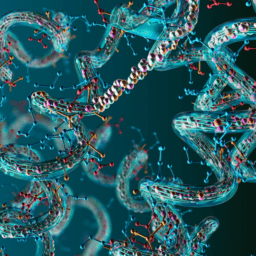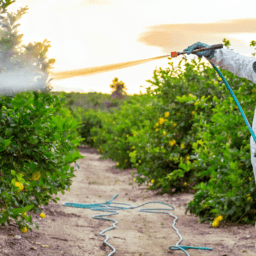Since 1982, there has been increasing evidence connecting industrial chemicals to Parkinson’s, but reasons to suspect this association stretch back hundreds of years.
In Ending Parkinson’s Disease, authors Ray Dorsey, Todd Sherer, Michael Okun, and Bastiaan Bloem write that the first modern description of Parkinson’s, An Essay on the Shaking Palsy, was published in London in 1817, a time of severe pollution. The authors argue that this pollution, caused by the city’s rapid industrialization, contributed to James Parkinson’s recognition of the symptoms now associated with Parkinson’s. To support this idea, the authors of Ending Parkinson’s Disease note that the modern nations undergoing the most rapid industrialization are also experiencing the fastest increases in the incidence of Parkinson’s. The authors also observe that since the Netherlands banned certain chemicals associated with Parkinson’s, rates of Parkinson’s have dropped in that area. Moreover, a recent study found a significant association between Parkinson’s and long-term exposure to air pollution.
In recent years, researchers have made significant progress in understanding how industrial chemicals increase a person’s risk of developing Parkinson’s. This progress has led to legal action, including civil lawsuits and legislation recently proposed in the US Congress, The National Plan to End Parkinson’s Act.
The Davis Phinney Foundation supports passing the National Plan to End Parkinson’s Act because this legislation will improve treatments and accelerate progress toward a cure. However, achieving these goals requires a national effort in the United States, partly due to the association between chemical exposure and Parkinson’s.
EVIDENCE FOR CHEMICAL ASSOCIATIONS WITH PARKINSON’S
Some of the earliest evidence linking industrial chemicals to Parkinson’s comes from the discovery that injection of MPTP, a synthetic opioid, causes symptoms of Parkinson’s. One consequence of this discovery was that researchers found that MPTP had a similar chemical structure to paraquat, a common pesticide.
Paraquat
Paraquat increases the production of reactive oxygen species (ROS), molecules that alter cellular function and damage cell structures. A high level of ROS leads to cell death in plants and animals, and when prolonged, an elevated level of ROS can start a cycle of increasing oxidative stress, which plays a role in Parkinson’s.
In addition to finding clear connections between MPTP, paraquat, and Parkinson’s, researchers have found other chemicals that increase the risk of developing Parkinson’s. Two of the most significant of these are rotenone and trichloroethylene (TCE).
Rotenone
Rotenone, another pesticide, disrupts mitochondria, which produce energy in human and non-human cells. Damage to mitochondria is part of the pathophysiology of Parkinson’s because when mitochondria malfunction, cells, including neurons, can die.
Trichloroethylene (TCE)
TCE first became associated with Parkinson’s in the late 1990s. As with rotenone, the primary way TCE is thought to trigger Parkinson’s is by affecting mitochondria. TCE is used in more applications than paraquat and rotenone, so more people are exposed to it.
Some uses for TCE include—
- Degreasing
- Decaffeination—until 1977
- General anesthetic—until 1977
- Refrigerant production
- Spot cleaning in dry cleaning services
- Textile production and dyeing
According to the EPA, TCE is among the most common pollutants found in well water samples. For example, in water quality sample studies, 20% of wells sampled in New Jersey and 16% of wells sampled in Nebraska had levels of TCE and other related chemicals that were above the limits considered safe by the EPA.
Other Chemicals
Some of the many other chemicals with links to Parkinson’s include:
- Chlorpyrifos, an insecticide that affects microglia
- Dieldrin, Lindane, and other organochlorines, which impair mitochondrial function
- Maneb, a fungicide that increases ROS
- Permethrin and other pyrethrins and pyrethroids, insecticides, which increase dopamine transporter production and may make dopamine neurons more vulnerable to toxic chemicals
THE QUESTION OF CAUSALITY
In 2011, the NIH reported that people who used paraquat and rotenone were 2.5 times more likely to develop Parkinson’s, but the report did not say that paraquat and rotenone caused Parkinson’s. Similarly, a 2021 review of scientific studies found an association between pesticide exposure and Parkinson’s, but the author noted that there is insufficient evidence to say that any specific pesticide exposure is a direct cause of Parkinson’s.
One reason it’s challenging to prove pesticides cause Parkinson’s is the likelihood that multiple factors contribute to each person’s development of Parkinson’s. In fact, a 2015 study found that exposure to multiple chemicals is a risk factor for Parkinson’s, and a 2016 study shows that prenatal or other early exposure to toxins predisposes a person to increased risk from exposure later in life. These findings suggest that a person may be exposed to a pesticide or other toxin at some point but not see any effect until later in life, which complicates proving causality.
Other known risk factors of Parkinson’s also increase the risk of exposure to pesticides and other chemicals.
Age
Increased age is the most significant risk factor for developing Parkinson’s. A study published in December 2022 found that in North America, 62 out of every 100,000 people over 45 years old will be diagnosed with Parkinson’s, while up to 212 out of every 100,000 people over 65 years old will be diagnosed with Parkinson’s. An earlier study reported that the prevalence in people over 80 is 1,900 per 100,000. One reason for this increase is the greater exposure to additional risks, including industrial chemicals, resulting from living longer.
Genetics
Approximately 15% of people living with Parkinson’s have a family history of Parkinson’s. Some of these family links are genetic, and many of the genes known to relate to Parkinson’s have “incomplete penetrance,” which means that not everyone who carries a gene with a link to Parkinson’s will develop Parkinson’s. This also supports the idea that Parkinson’s develops because of multiple factors.
Notably, specific genetic mutations predispose a person to be more affected by chemical exposures. For example, people with LRRK2 mutations may be more likely to develop Parkinson’s after exposure to TCE. Other genes that increase the risk of pesticide exposure and other chemicals include Parkin, PINK1, MHCII, and SNCA.
Head Injury
Since the 1990s, studies have shown that having had a traumatic brain injury (TBI), like a concussion, is a risk factor for developing Parkinson’s. A 2012 study found that the “combined effect of two environmental exposures, TBI and paraquat exposure, on Parkinson’s Disease development…is larger than each component effect.”
Farming, Rural Living, and Well Water
Farmers have a greater likelihood of being diagnosed with Parkinson’s than non-farmers, and the longer a farmer works with pesticides, the more likely it is that they will develop Parkinson’s.
Rural living and using a private well for water are also associated with an increased risk of Parkinson’s. The authors of Ending Parkinson’s Disease suggest that these factors relate to pesticides and industrial chemicals that spread widely in the air and seep into water supplies.
WHAT CAN YOU DO TODAY ABOUT CHEMICAL EXPOSURE?
Minimize Exposure
The best way to protect yourself from chemicals is to minimize exposure.
The CDC offers guidance on protecting those at the highest risk of exposure to pesticides and other chemicals. A summary of this guidance is as follows:
- Eliminate hazardous materials and replace them with safer alternatives. For example, use organic farming and permaculture principles to manage pests with natural predators rather than using a chemical pesticide on your property.
- If you must use chemicals such as pesticides and cleaning solvents, use products that can be applied in ways that isolate people from the chemical. Be careful with personal protective equipment (PPE) like masks and gloves that can fail or be worn improperly. Always follow manufacturer guidelines for PPE.
- If you spray a chemical pesticide or solvent, do so on calm rather than windy days.
- Do not allow chemicals to leak into the ground, especially if your home uses well water.
Know Your Air and Water
Understand the risks in your local area, including inside your home. There are multiple online resources available to help:
- Find Superfund sites, which are sites known to have high levels of contamination
- Consult Information about private wells from the EPA
- Learn about the public water supply in your area from the Environmental Working GroupConsider water filtration
- Understand indoor air quality and test your indoor air
Eat Well
Many of the chemicals associated with Parkinson’s relate to immune function, and eating a healthy diet helps your immune system function well. Consider eating organic food, and always thoroughly rinse food that may have been exposed to pesticides. Many Parkinson’s specialists recommend following a Mediterranean Diet.
Exercise
Regular exercise also supports a healthy immune system. EndingPD.org has excellent resources for exercise, and you can also visit our hub of exercise resources.
The most important thing is to stay active, so plan a program you’ll stick with. Joining an exercise class can help with motivation and help you stick with your plan.
Genetic Testing
Genetic testing can help you understand whether you are at increased risk from chemical exposure. Understanding your genetic risk factors may also be helpful because there are new treatments currently in clinical trials that focus on specific genetic mutations.
To access genetic testing, consult your care provider or join a trial like PDGENEration.
Join an Observational Trial
There are also multiple observational trials you can join to help advance your understanding of Parkinson’s and the role that chemicals play in it.
Two ongoing observational trials are the Parkinson’s Progression Markers Initiative and the Cincinnati Cohort Biomarker Program.
Support the National Plan to End Parkinson’s Act
While the steps above will help protect you and your family, addressing the ongoing effects of past use of chemicals will require a global effort. This fact is why the Davis Phinney Foundation has partnered with the Michael J. Fox Foundation and other organizations to support the National Plan to End Parkinson’s Act.
REASONS FOR HOPE
Our understanding of Parkinson’s increases every day, and we know what to do to lower risks and maximize quality of life for people living with Parkinson’s today. Over 30 countries have banned the use of many of the chemicals discussed above, and studies have already found that these efforts have lowered the incidence of Parkinson’s in some of these countries.
By living carefully, exercising, eating well, and encouraging companies and governments to act responsibly based on the data we have about the risks of chemical exposure, we can live well today and move toward a future without Parkinson’s!
 Join Our Peloton Club
Join Our Peloton Club
Our educational content is made possible because of the monthly donors in our Peloton Club. Want to become a member and help us continue to create the resources people need to live well with Parkinson’s? Learn more and register to become a member here. (You’ll get a cool gift if you do!) It’s as easy as can be to set it and forget it.

















